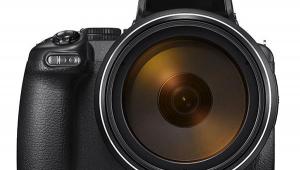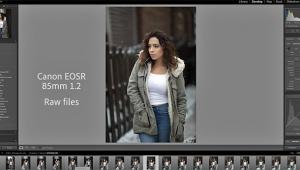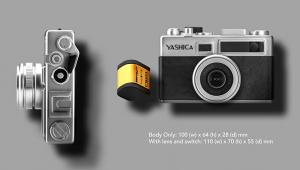9 Trends That Will Change Photography in 2017
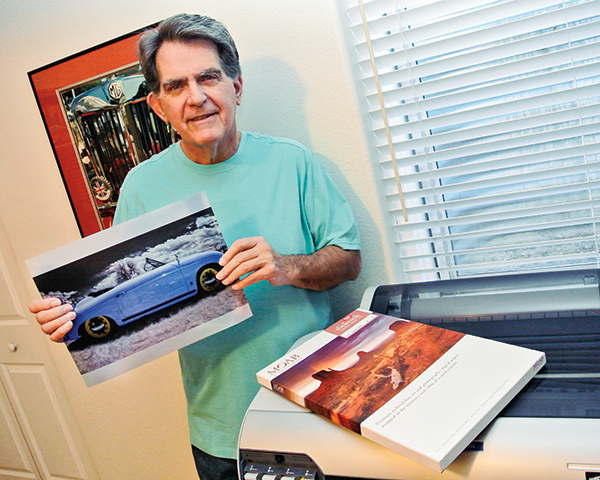
“People who follow all the rules and chase every trend tend to get forgotten—they look great, but they’re not as memorable.”—Dita Von Teese
Some trends just won’t go away: Billboard magazine notes that U.S. vinyl album sales are up 53 percent, generating $416 million in sales. Stereophile, our sister publication, reviews new analog audio equipment and you can purchase new Nikon F6 or Leica M-A film cameras from Shutterbug advertisers. Ferrania is back making film and the Japan Camera Hunter website is making their own film, a discontinued Agfa emulsion they’re calling JCH StreetPan 400. Amazon’s top-selling photo item is Fuji’s Instax Mini Instant Film. There’s even a new twin-lens instant camera, Mint’s InstantFlex TL70, and yes, I gotta get me one of those.
The industry expects the action camera market to grow through 2019 but not everyone is feeling the love. Competition from products like the Olympus TG-Tracker has split the market and GoPro’s sales have dropped, causing them to cut 7 percent of its workforce in January.
The Department of Transportation launched a process requiring drone owners to register them. In August, the FAA implemented rules for commercial use, which requires a “remote pilot certificate,” a blanket ban on night flights, and a requirement that all flights remain below 400 feet. (For more on drone/quadcopters, see August 2016’s Geared Up column.) In July, Utah lawmakers approved a bill allowing firefighters or law enforcement to disable drones flying over wildfires. That same month, a California man was arrested for “interfering with firefighting operations” while flying a drone over a wildfire. Reports of drones being fired upon are increasing and the Daily Mail reported that a Utah manufacturer has rolled out a range of ammunition designed to shoot drones down. The July 2016 issue of Wired has an article entitled “Defend Your Airspace, Keep Pesky Drones at Bay,” offering five ways to shoot down drones. Be careful flying out there.
So what trends or micro trends do I expect to continue or grow next year? Here are nine imaging trends I’m looking forward and maybe not so forward to in 2017.
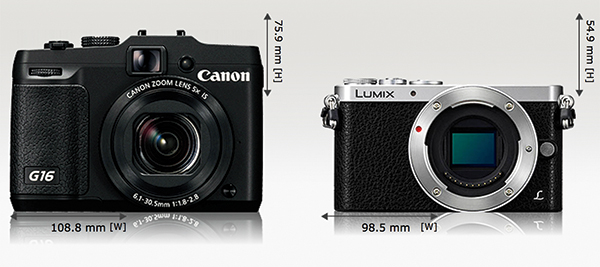
1. Several Linked Trends: Compact Cameras C’est La Mort
Other than shooting Instagram images of weather here on Daisy Hill and construction of my model train layout, I don’t make many photographs with my smartphone. But there’s no doubt cellphone photography has affected the once ubiquitous point-and-shoot market. According to CIPA, fixed-lens compact camera sales are down 28 percent while system camera sales were down only 4 percent. Why? Much as it was Batman v Superman, here’s the answer in a photograph from the Camera Size Comparison website of Canon’s G16 compact camera vs. Panasonic’s Lumix GM1 that offers a family of interchangeable lenses. The reason why manufacturers don’t see the writing on the wall reminds me of a story noted photographer Charles Lewis once told: A shooter says to Lewis, “I’m losing money on every wedding I shoot.” So Lewis tells him, “You know what you’ve got to do, don’t you?” The guy answers, “Yes, I’ve got to shoot more of them.”

2. Desktop Printers as an Endangered Species
There’s a strange dichotomy going on in the world of photo printers. On one hand Epson offers printers like the 44-inch SureColor P10000 ($6,495) that produces output quality only dreamed of in 1994 when they launched the Stylus Color printer. The SureColor P10000 has a 10-channel PrecisionCore Micro print head capable of output up to 2400x1200dpi with a new UltraChrome Pro nine-color pigment ink system that produces impressive color and black density. Not to be outdone, Canon offers a 44-inch imagePROGRAF PRO-4000 ($4,896) as well as a 24-inch imagePROGRAF PRO-2000 ($2,546). Both use the 11-color Lucia Pro ink set for increased color gamut, reduced bronzing, improved scratch resistance, greater clarity, and increased black density. Yet the feedback I receive from Shutterbug readers is that the build and output quality of affordable desktop photo printers has done a Thelma and Louise off a cliff. According to the Photizo Group, a Massachusetts market research firm, North American sales of consumer all-in-one printers dropped 12 percent last year and the number of pages printed at home has declined 15 percent since 2009. Computerworld suggested that printing “consumes expensive ink, and only the person you give it to can see it. Posting the same material online costs nothing, and countless people can see it.” There is, I think, a fallacy in this kind of short-term thinking. A few years ago I attended my sister and brother-in-law’s wedding anniversary celebration. During the party my aunt gave me a stack of photographs she had of me growing up, some when I was 4 years old. Ask yourself: What will happen to all those Facebook photos and Cloud-stored images? They might be lost forever because of password issues (admit it, you know that’s a problem) or hackers. How permanent are those images? After all, they’re just zeros and ones. Do yourself a favor in 2017, make some prints.

3. Smartphone Photography Creates More Photographers
Who knew? Futuresource (futuresource-consulting.com) reports that thanks to the smartphone boom the worldwide population of photographers has grown by a factor of eight over the past 10 years. They also think that while smartphones represent the primary camera for a growing number of people, present company excepted, the opportunity for users to step up to a digital camera grows with every new photographer this trend produces. That’s an interesting theory that I sincerely hope turns out to be true. This trend of increased cellphone photography then brings up the inevitable question…

4. Selfies. How Is that Still a Thing?
In the book Digital Vertigo, psychologists Drs. Jean Twenge and Keith Campbell call it a narcissism epidemic: “A self-promotional madness drawn by our need to continually manufacture our own fame to the world.” And it’s one that keeps awarding the Darwin Award to deserving people each year. Take this headline, for example, which sounds like it could come from the New York Post but doesn’t: “Man Dies Taking Selfies with Gun.” A 43-year-old Washington state man fatally shot himself while taking selfies while he and his girlfriend were taking pictures of themselves with a weapon. The woman told the Skagit County Sheriff’s Office that she and the man had made photos with the gun several times that day and he’d loaded and unloaded the gun many times. A photograph of the president shown using a selfie stick is another sad commentary on this trend.

5. More Connectivity
Remember last year’s trend of the “Internet of Things”? Well, the IoT—as it’s known—is only growing bigger in 2017, especially when it comes to web-connected imaging devices. In my April 2016 Geared Up column, I wrote about how some years ago, while visiting an Agfa—remember them?—facility in Brussels, one of the tour leaders asked a group of writers, including moi, “What do you think of the idea of adding a phone to a digital camera?” We all laughed and thought it was the dumbest idea we’d ever heard. Futuresource thinks smartphones are now setting the bar in terms of interfaces, connectivity, and apps, producing a usability gap between smartphones and digital cameras. Panasonic’s Michiharu Uematsu said an Android-powered camera would be on the way “very soon” because “the interface from our cameras is sometimes experienced as too difficult.” So instead of designing a better camera interface (and Panasonic has one of the better ones, I think) we’re going to have an operating system that’s susceptible to viruses. And there’s this. James Clapper, Director of National Intelligence, told lawmakers this year that, “the Internet of Things could be weaponized by governments as a spy tool, which will add to global instability.”
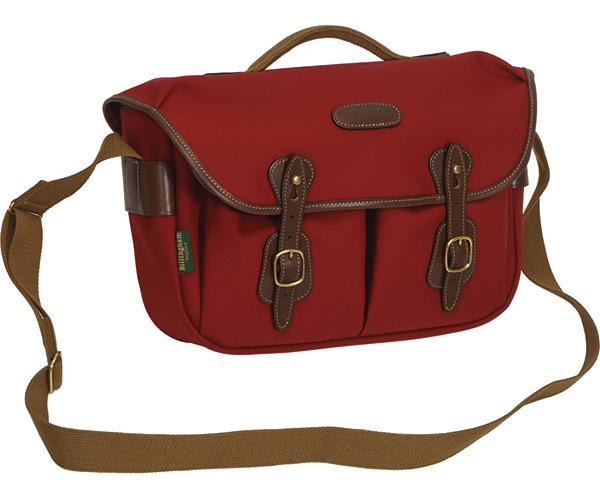
6. Fashion Camera Bags
Camera bag and strap designers realize that we all have our own styles. Enter the fashion camera bag. While there’s no formal definition, let me posit one: A fashion camera bag’s design reflects the personality of the owner but does so without sacrificing the necessary security and functionality of bag construction and utility. This trend began with companies building camera bags for female photographers using designs that emulated purses but also functioned as camera bags. But elegant camera bags have long been made for photographers, regardless of their sex, and many times these bags were expensive and maybe not all that functional. Yes, they cost more, too, but chances are bags from Billingham, Jill-e, Foxy Camera Bag, and ONA will last longer than the Chinese knockoff you picked up at Crazy Charlie’s Flea Market.

7. Vertical Video?
Not all trends or micro trends are good news. In some circles, it has become fashionable to shoot video clips in portrait orientation and then to post them on YouTube, Facebook, and other social media sites. Imagine the following in my Andy Rooney voice: When I think about it, maybe I understand why. After all, when I watch Rogue One: A Star Wars Story in the theater it’s on the big vertical IMAX screen and when I watch Person of Interest on TV it’s with my Samsung vertical plasma TV. Of course it’s not! Do me a favor, turn the camera in the same direction that we watch all video—horizontally. And if for some reason, you just can’t seem to be able to do that, don’t push the video button. Thank you. This has been a Public Service Announcement.

8. Better Cameras Not Bigger Cameras
Everybody likes bigger sensors with more megapixels but a Canon EOS-1D X Mark II is 27 percent wider and 132 percent taller than an Olympus PEN-F. It’s 121 percent thicker than an Olympus PEN-F and weighs 258 percent more. As Dan K once said, “I have come to the realization that neither equipment, nor technique, can make up for inspiration, vision, and message.” But, but, but… The 100-megapixel Hasselblad H6D-100c is so dreamy, you say. If you’ve got the bread ($32,995) go for it. One of the big advantages of big sensors is you can crop the image and maintain some semblance of image quality. Yup, that’s true but how about this? Why not just shoot using the cropping you really want to use, instead of throwing away image quality. Please think of the megapixels. I realize that with street photography or grab shots this isn’t always possible but even Garry Winogrand, the patron saint of street photography, once said, “A photograph can only look like how the camera saw what was photographed.”

9. The Slow Death of the Trade Show
Trade shows are becoming smaller and less relevant. Not just for photo gear. Writing in the automobile blog Jalopnik, Patrick George said, “The auto show as we know it is dying.” This is because product launches for Chevrolet’s Camaro or Ford’s Mustang let manufacturers control the message away from the cacophony of a trade show. Apple has known this for some time and hasn’t participated in CES since 2011 with more companies following their example. The upside is that camera stores who’ve survived by catering to their customers, instead of just providing a place for people to look at gear before ordering it online, are the beneficiaries. Much as record stores who held firm selling vinyl albums are riding the analog wave, camera stores such as Denver’s Englewood Camera, Salt Lake City’s Pictureline, and Seattle’s Kenmore Camera are leading a revival of face-to-face retail. And then there’s this… Earlier this year, the Mirrorless Rumors blog posted the following: “There is almost no secret left to discover about the new Fuji X-T2. The camera will be launched within the next 6-8 weeks.” An accompanying video clip showed how the camera works. By the time the X-T2 arrives at a trade show, lots of people will already know everything about it and it will be old news.
Joe Farace has been writing and prognosticating about photography for more than 30 years. He shares his thoughts in Shutterbug’s print edition and website as well as his own sites and blogs, such as joefaraceblogs.com, mirrorlessphototips.com, and, if you enjoy photographing cars, joefaraceshootscars.com.




